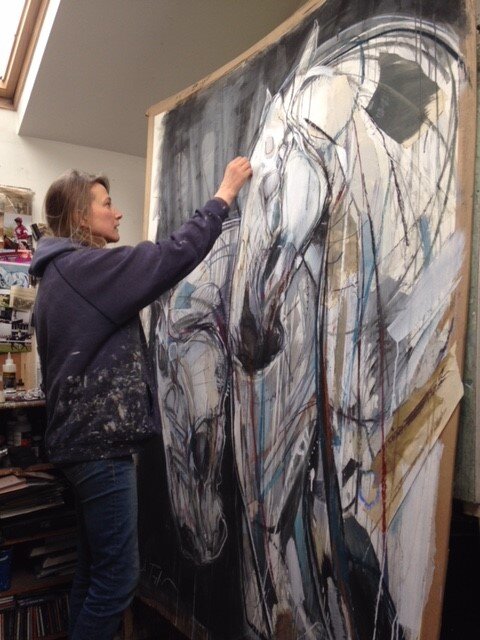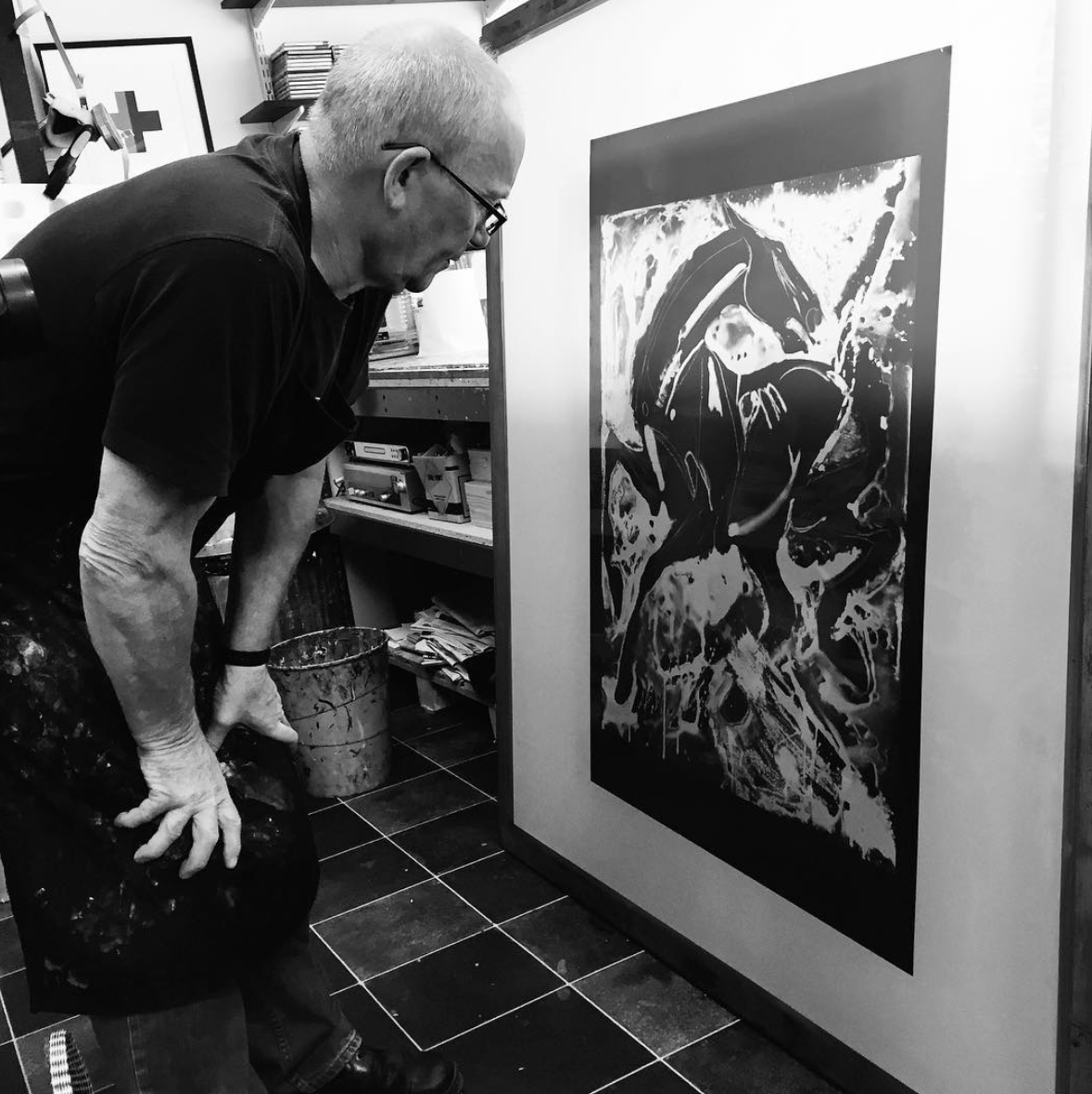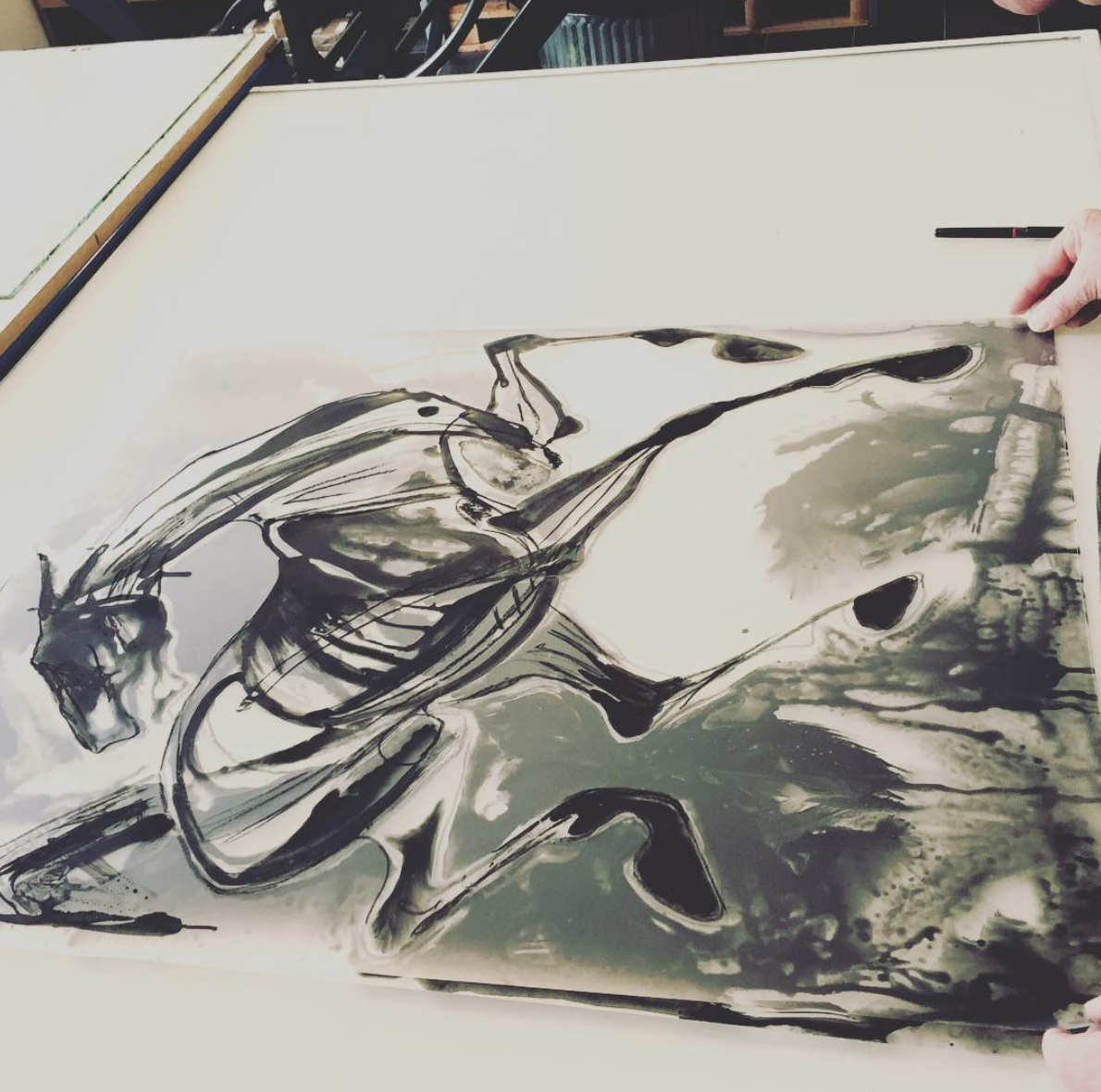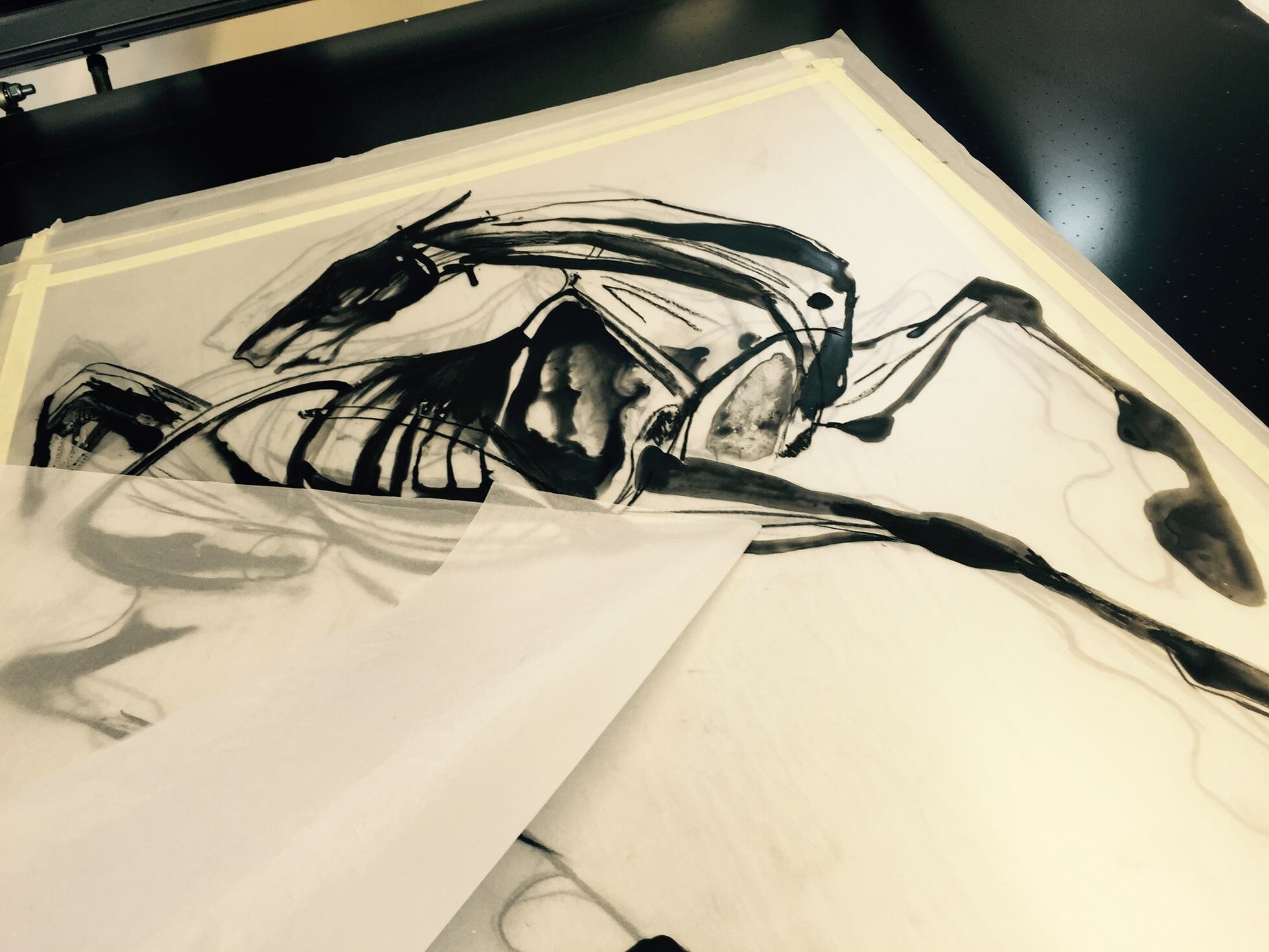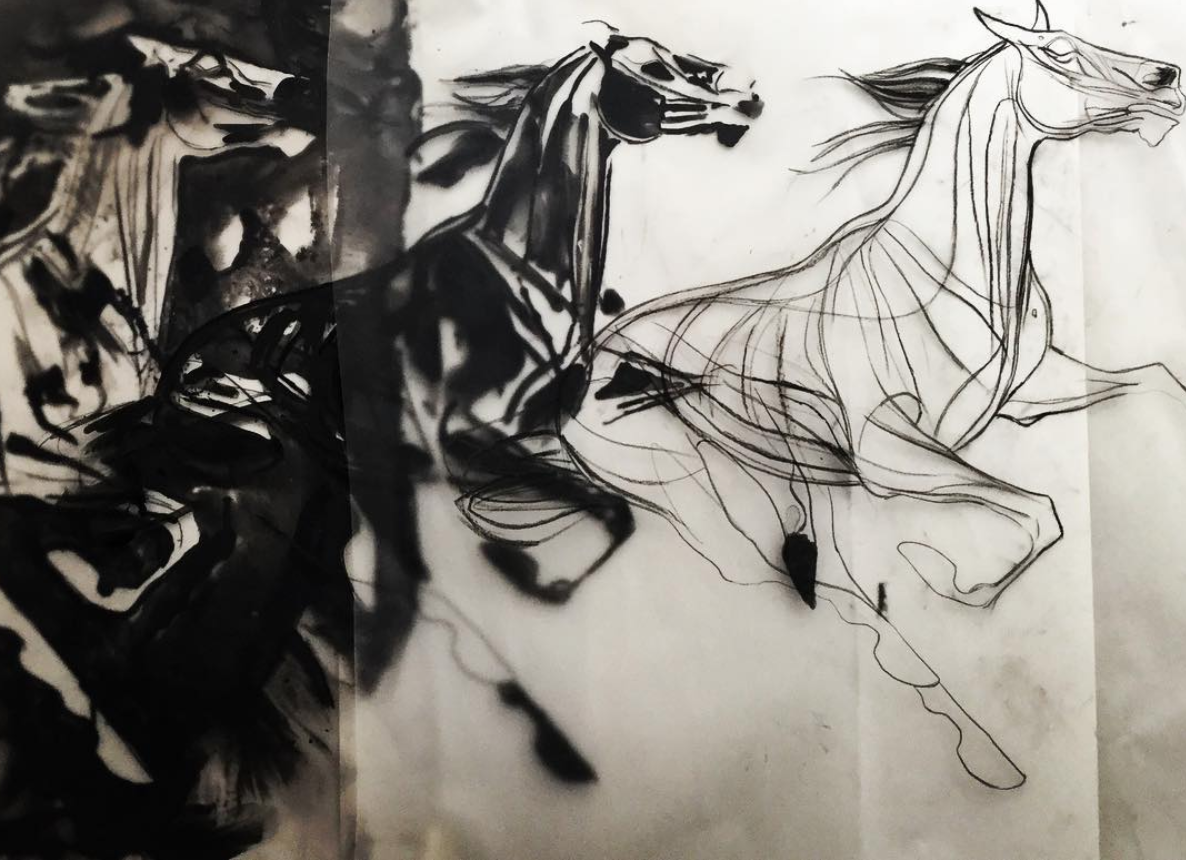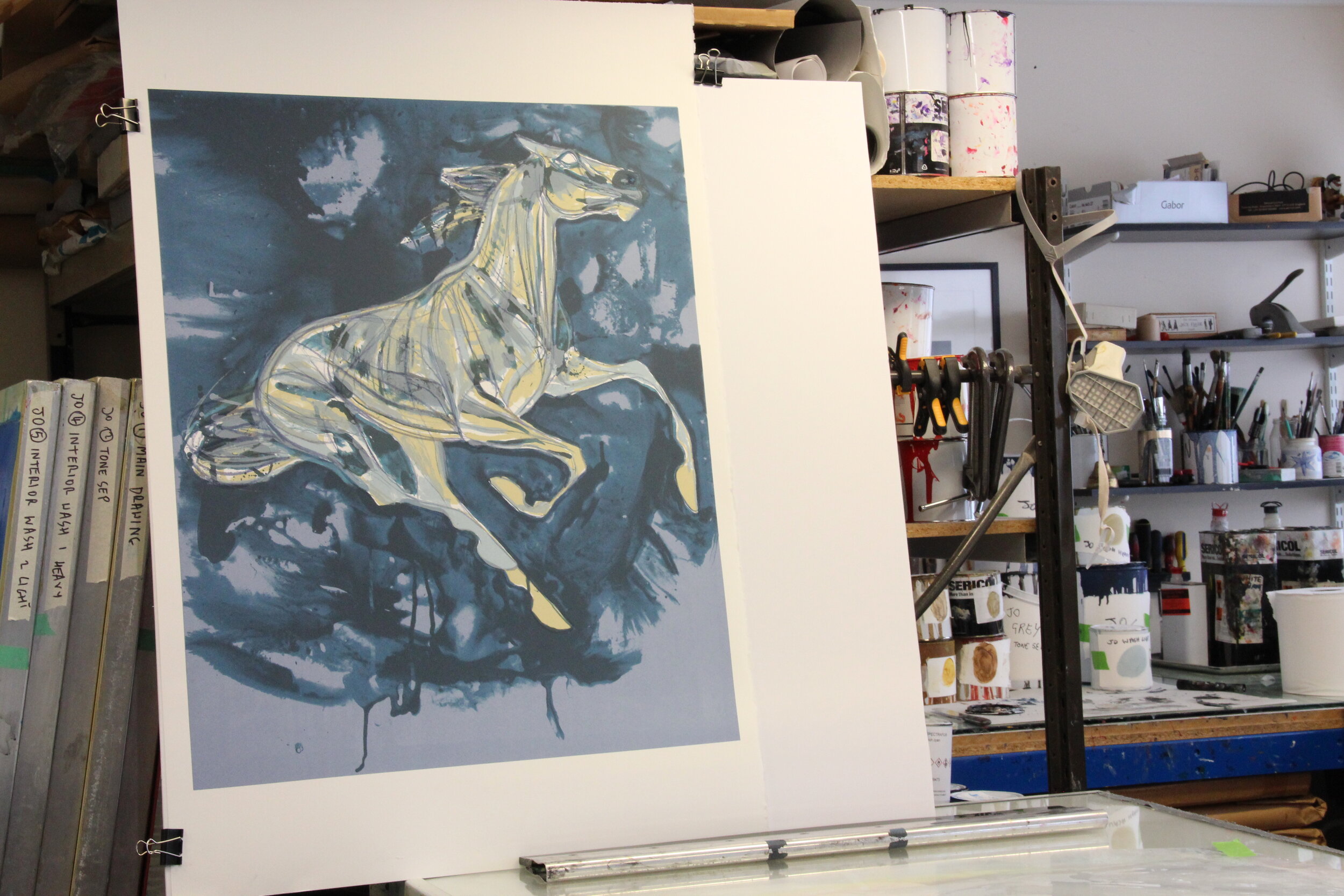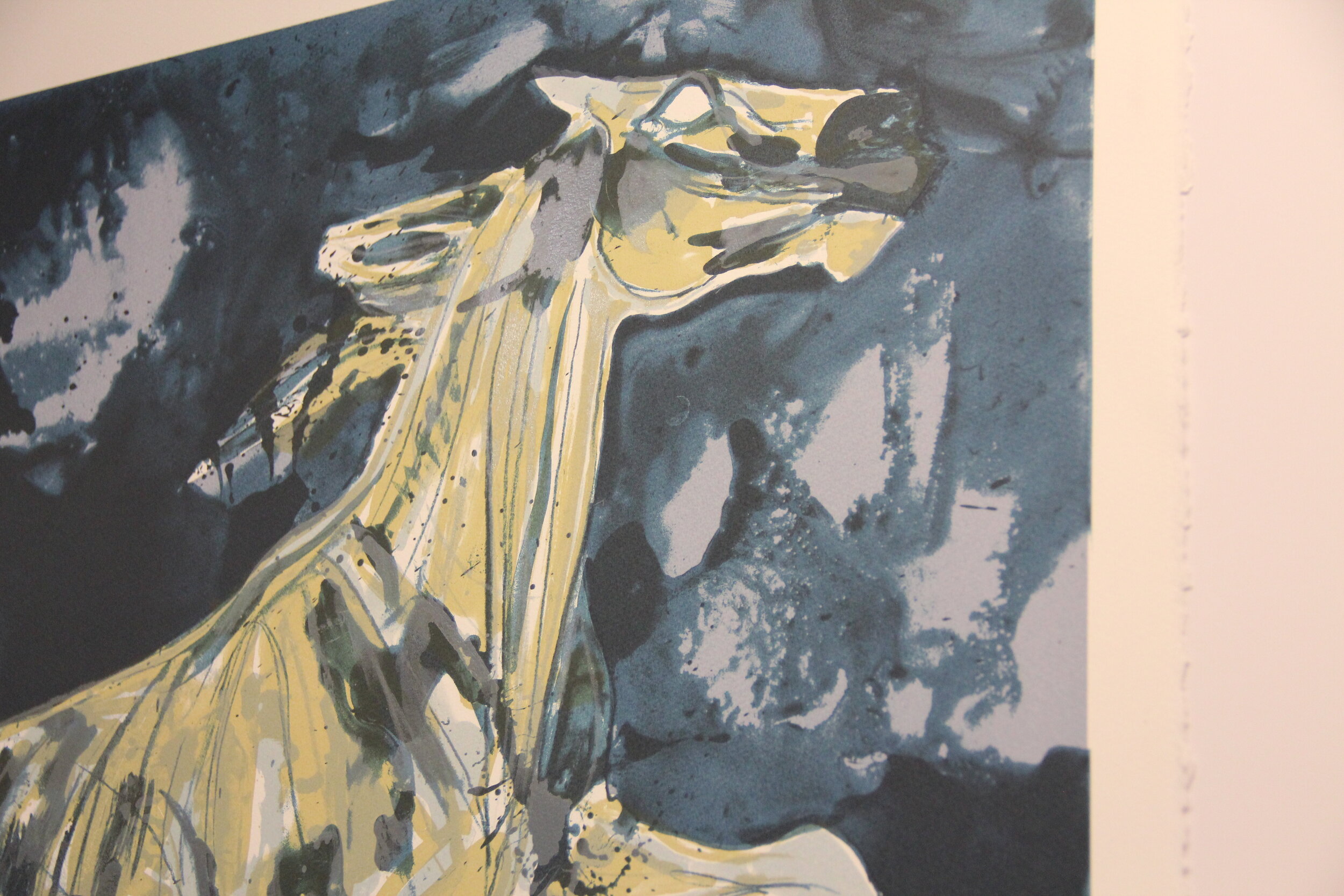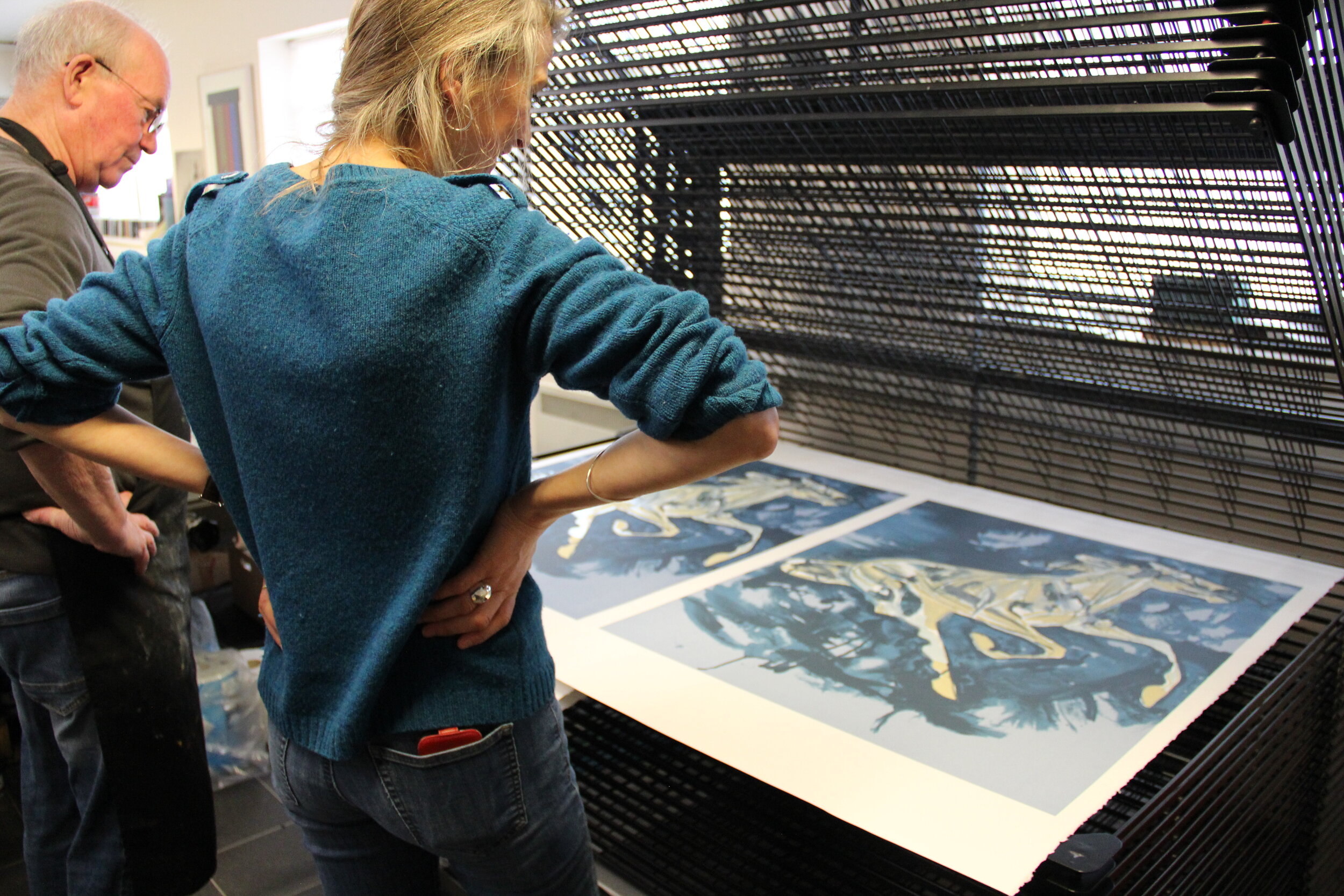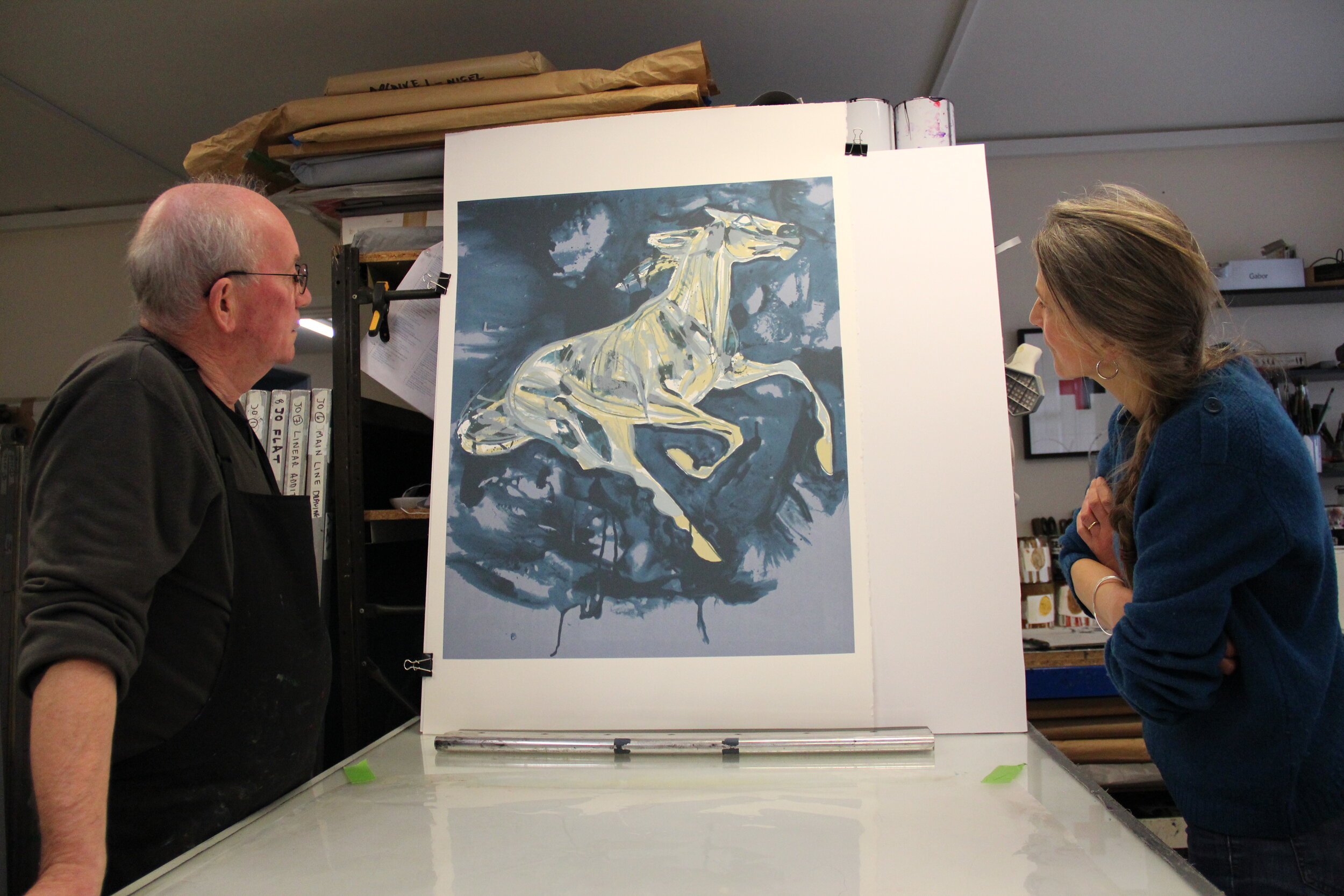Q&A: Jo Taylor
Celebrating the energy, grace and strength of horses in her dynamic drawings, paintings and limited edition prints, Jo Taylor is informed by an intrinsic knowledge of her subject. Working alongside Kip and the studio for many years, the painter has produced several etchings and screenprints which elegantly transfer the fluid effects and mark making distinctive to her practice into a whole new medium of print.
“I love the way that print encourages experiment. I am never in control and am often peeping through my fingers when the press starts to roll.”
Karina Sawyer speaks to the Lancashire-based painter about her practice and the application to printmaking with Kip and the Studio.
Despite the uncontrollable consequences of the current health crisis, the studio and fellow artists have continued to produce new work. Karina Sawyer caught up with Taylor to find out a little more about her process and inspiration for ‘Eclipse’, a new limited edition print made with the artist. Contact us for more information.
Jo Taylor working in her studio
Karina Sawyer: There must be something really special about horses to dominate the focus of your work. What is it about your distinctive subject matter that you enjoy so much?
Jo Taylor: A life with horses and the natural world has informed my work. As with most artists, a subject evolves from fascination, instinct and intrigue. As a child, all I wanted to be was a horse so I started drawing and riding them once I’d realised that I couldn’t become one. Being with the horse is a huge part of my daily life - just watching their behaviour as individuals and as a herd is a joyous experience. I am always delighted by their mood swings and enjoy their unpredictability and the expression that this creates.
“I always want the viewer to feel as though they can walk around my horses”
KS: And what about your medium, what makes it so suitable for capturing this expression and constructing the living and breathing creatures within your images?
JT: My chosen medium hopefully reflects this energy as I find that mixing drawing and painting materials with collage work helps to portray this volatile attitude. It’s through these materials that I am building the horse from the inside out in a quest to flesh out the bones with layers of paper and paint. My time as Artist in Residence at Liverpool University Department of Veterinary Science has helped me to understand what lies beneath the skin of these magnificent beasts, sketching them during operations and postmortems. Sculpture is also a huge influence - I always want the viewer to feel as though they can walk around my horses and so Marini, Frink and Rodin have been important figures together with the paintings of Leonora Carrington, Marlene Dumas and Paul Nash.
KS: That sculptural influence is so clear when you can see the skeletal arrangement to much of your work. I can almost picture an internal sculptural process in your mind as you build the lines that become bone, muscle and flesh. Your process to making these equine portraits is predominantly as a painter, so what drew you to making prints? How did you begin working with Kip and the studio?
JT: I started working with Kip through a significantly large stroke of luck around twenty five years ago. I had been working with the racehorses in Newmarket and it was a chance meeting that led to our first edition of prints. I am from a graphic family - my grandfather was a printer and my father is an engraver so it is instinct to work in print. I love the way that print encourages experiment. I am never in control and am often peeping through my fingers when the press starts to roll.
KS: Perhaps you’ve some inherited skill for print! Looking at your drawings made directly on Truegrain, you manage to retain a dynamic approach to your application. As you lay down each element, do you find yourself adapting your working method to move from upright canvas to a horizontal surface? The elegant and energetic technique you use clearly works for your drawings made for print separations.
JT: Truegrain is the most amazing surface to work on. I am always fascinated to see how the qualities of the graphic materials reproduce through the print process via the sensitivities of Truegrain, enabling me to work in a way that is totally natural to me. Because of the ability of Truegrain pick up every mark - even that made by the lightest of touch, I can work in a purely instinctive way. The only adaptation is that I have to think tonally which isn’t top of my list when making a painting so this is a challenge. When I’m painting, I tend to constantly react to the marks that I make whereas when I work in print I can’t do this. I have to complete the thought process on the Truegrain and commit to it.
KS: I suppose it forces you - in a good way - to commit to a mark. Its a different way of working, but do you find that printmaking feeds into your wider practice?
JT: Definitely. It makes me experiment. Although it’s the man more than the medium that makes this happen. Kip has been a huge influence throughout my career. He is often sitting on my shoulder in my studio up here in Lancashire saying “ Just go for it” So I do.”
Jo & Kip in the studio proofing a print (2014)
“Somehow Kip manages to untangle all the ideas and concerns that I have to produce an image that is totally alive.”
KS: It’s certainly something that working collaboratively achieves - there is perhaps less solitary pondering. With Kip, there is another brain to encourage and push ideas forward.
JT: There are a few people that you meet in your life that really matter - they are an inspiration, an influence, a mentor and Kip is one of them. I completely trust him. I have often, infact most times turned up to the sanctuary of The Print Studio ready for action but without a clear view of what I want to achieve. Somehow Kip manages to untangle all the ideas and concerns that I have to produce an image that is totally alive.
Proofing of ‘Horse in a Dream’, a limited edition screenprint produced in 2019
KS: The haunting, ethereal quality to your subjects hint at a mysterious narrative… portrayals of Pegasus perhaps? Does your dedication to the subject ever take influence from stories of folklore or legend?
JT: Yes, definitely - I am fascinated by such tales in particular that of the the Hobby Horse of Minehead and the pagan tradition that surrounds this haunting story of a warning horse that lurks in the sea to attack the raiding ships off the West Country coast. Also, the gruesome story of the native Americans Indians who blinded their horses before they rode them off a cliff edge. What sensational imagery!
KS: Wow! There are some seriously dramatic stories you can see in many examples of your work. In some, the subjects are illuminated against a stormy background where you can really sense that turbulence. I have noticed the colour palettes for your prints are often a little more bold in comparison to your paintings, for example in ‘Eclipse’, the central head is surrounded with a vivid, flaming red. Is this a conscious decision when making prints due to a different medium? How does making a print open up new directions for your work?
JT: Printmaking encourages abstract thoughts, experimental mark making and vibrant use of colour which can be explored further in the paintings, especially the larger pieces where I can put my whole body into the work. I am very comfortable when working on a large scale - it’s the nature of the beast.
‘Eclipse’ (detail), 2020
KS: Can you tell me a little about how you came up with the image/artwork for your ‘Eclipse’ print?
JT: The model behind the image of ‘Eclipse’ is the stunningly beautiful and ferocious Irish Thoroughbred stallion named Camelot. I have travelled the world in search of the finest horses and horsemen and but the best are always on the doorstep. Camelot was full of temperament and attitude so he became an obsession and I made a series of charcoal drawings of him. One of these was the starting point of the Eclipse print. Camelot’s ancestor was the invincible racehorse, Eclipse who was painted by George Stubbs. A few years ago, I visited the Royal Veterinary College to sketch the skeleton of Eclipse and felt old George breathing down my neck as I was drawing the bones that were buried underneath the flesh that he had studied so deeply.
KS: Making observational drawings is clearly an important part of your practice - to feel some even stronger connection. I’m aware you have reference models close at hand with your dog and your own Thoroughbred, how lucky you are! I’m wondering if you found your practice has had to change at all due to the ongoing pandemic crisis? How did you adapt and accommodate a remote collaboration with the studio to produce ‘Eclipse’?
JT: I have been up to all sorts on the grounds of animal welfare through this pandemic! I‘ve managed to get out into the country and enjoy the beautiful, wild landscape that surrounds us here in the rural Lancashire. Whilst riding during the early stages, I became a time traveller, going back to the days when the horse was central to all our lives. As daily routine almost ground to a halt, I began to appreciate how life must have been years ago when we all relied on the horse - we were all horsemen back then to some degree and with that I have a strong sense that our world has evolved through theirs. Because of the pandemic, I am sad to have missed precious studio time to make the print but I am joyful that I have been involved once more with Kip and Alan and trust them completely to flesh out my horses. As we look back at a world that may never exist again, ‘Eclipse’ embraces a new dawn.
We are delighted to be publishing this striking new edition with Jo.
Taylor has exhibited widely showing work at The Royal Academy of Arts, London, as well as internationally at galleries in America and in Dubai. She was artist in residence at the Department of Veterinary Science, Liverpool University from 2002 – 2008.
She lives and works in rural Lancashire.


